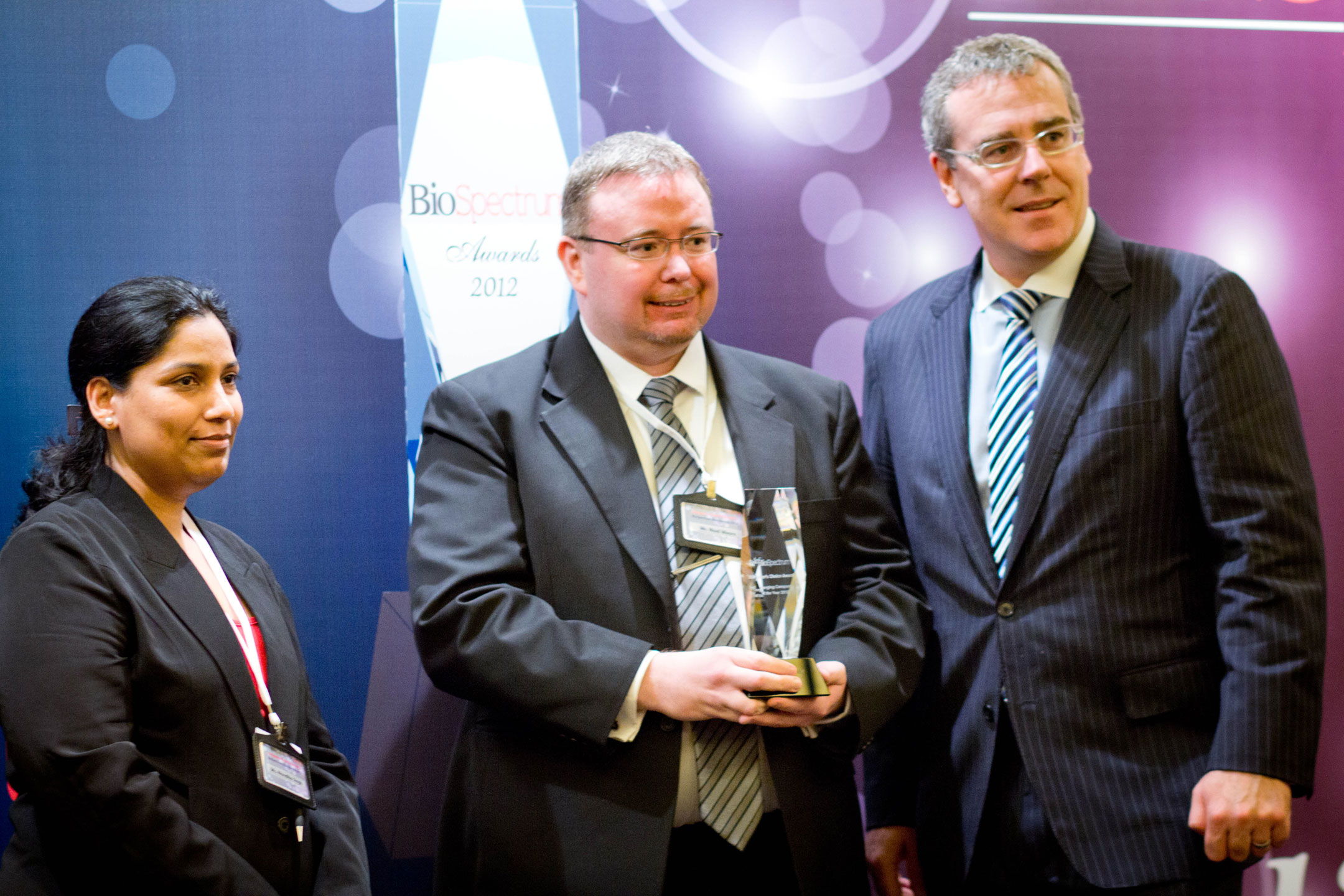
Dr Noel Moore, CEO, HistoIndex, receives the award from Mr Tim Dillon, commissioner to South East Asia, Victorian Government Business Office, Australia
Biopsy has been used as a gold standard for determining the extent of liver disease. But this method has its limitations and many times it fails to provide critical information about the severity of the disease to the pathologists. To overcome this disadvantage, Dr Dean Tai, a postdoctoral fellow at the Institute of Bioengineering and Nanotechnology (IBN), Agency for Science, Technology and Research (A*STAR), Singapore developed the Fibro-Index and the Histo-Hepa techniques with Prof Hanry Yu.
Dr Dean Tai then joined hands with Dr Gideon Ho, an A*STAR national science scholar responsible for commercialization of A*STAR biomedical sciences technologies, to set up HistoIndex, a spin-off company of A*STAR, to bring these revolutionary platforms for the diagnosis of fibrosis to the market.
The company won the BioSpectrum Asia Pacific Bioscience Industry Emerging Company of the Year Award for 2012.
Since its inception in 2010, HistoIndex has created new standards of diagnosis for fibrosis and cancer. The difference that HistoIndex is bringing with its technology is the scalability into multiple organs and new harmonized standard of assessing the severity of fibrosis and cancer.
"HistoIndex is the first in the world to provide stain-free, three-dimensional, quantitative imaging solutions for visualizing and staging fibrosis. The laser-based imaging system, Genesis, is currently installed in our trial site hospitals and research labs," says Dr Giedon Ho, chief commercial officer, HistoIndex.
For its innovative technology, HistoIndex was successful in getting a total grant of more than $0.77 million from A*STAR, SPRING and the ministry of information, communications and the arts, and equity financing worth $1.5 million from SPRING SEEDS and angel investors. HistoIndex also received grants in China, Taiwan and European Union for its product.
HistoIndex has taken an active approach to enhance the reach of its technology. In 2011, the company joined hands with National Taiwan University Hospital and Taiwan-based Chang Gung Memorial Hospital to collaborate on research using the breakthrough imaging technology. It has also applied for approvals from European Conformity Mark.
Taking an innovative approach to maintain revenue cycle, beginning 2012, HistoIndex instituted a pay-per-use model as a source of revenue. Through this model, clients can enlist HistoIndex's services to scan and issue reports on specific tissue samples. Besides having a strong revenue model, HistoIndex also intends to expand its regional reach and is looking to expand in China. This is in addition to its current Singapore headquarters, business development office in San Diego, US, and a manufacturing site in Europe. In the next 18 months, HistoIndex plans to go beyond liver and kidney diseases and look into cervical and breast cancer. In the longer term, HistoIndex plans to add multi-modular imaging capabilities into its existing imaging platform.
Dr Noel Moore, CEO, HistoIndex says, "Our aim is to scale our core competency across different organs and application spaces while remaining in the biophotonic domain. HistoIndex's R&D roadmap is realistic and achieveable with the skills we have and is likely to have significant impact on research, digital pathology and clinical diagnostics."
(inputs from Vipul Murarka)




